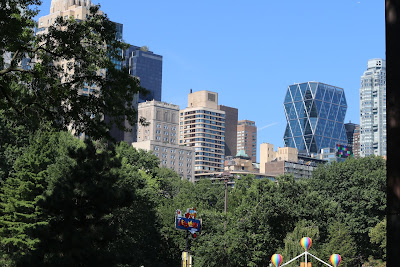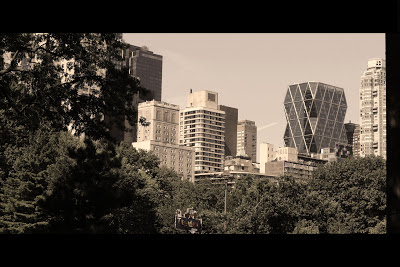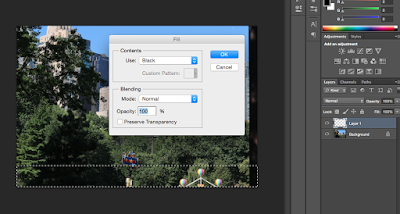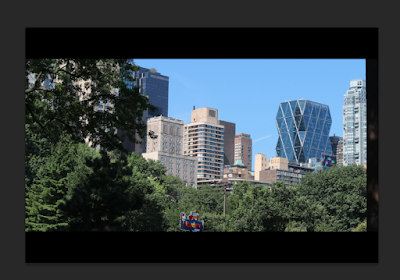For this shoot, I wanted to explore aspects of hyperreality which could be derived directly from the format of film. The world is exposed to a variety of representations of reality which can be altered due to the genre or tone of the piece of media that is being viewed. I wanted to highlight how far from reality these representations can be, yet the audience accepts it and occasionally confuses reality for this. In order to explore this, I wanted to treat an image the same way that a film would. I would present my images in a familiar format by making the image appear to be a screenshot from films of varying genres and alter colours and tones depending on genre and mood, comparing the differences from the original image. In order to create diversity within the shoot, I chose four films from four different genres in order to compare the differences in representation which can occur during this process. The films which I looked at included The Dark Knight (crime), 500 Days of Summer (Romance), Blade Runner (Sci-fi), and The Book of Eli (Action). I chose these genres as they contrast with each other greatly in the colours used. This could highlight how images can be used to manipulate audiences, altering reality in small ways which change the way that the audience perceives it. Since for this shoot I was photographing mainly landscape shots in varying conditions, I had to adjust my camera settings accordingly. For the two images below, I used a shutter speed of 1/250, an f stop of 9 and an ISO of 100. This would allow me to compensate for the sunny weather without having the image appear over exposed. I would also be able to capture detail in large landscape formats.
Influential Images:
Blade Runner
The Book of Eli
500 Days of Summer
The Dark Knight
My images:
This image is an attempt which takes influence from 500 Days of Summer. This does not appear to be an extremely altered version of our real it, however compared to the original image, the audience can see dramatic differences between the two. It becomes apparent that reality is much more dull compared to how it is represented within the media. Without becoming aware, the audience are being manipulated in order to view an image in a certain way. SInce this is supposed to be a romance reflection of reality, I have taken the colours within the image and increased the saturation. The bright colours of the image offer connotations to happiness which causes the audience to feel some of this emotion to the image. Contrast has also been increased within the image in order to highlight brighter tones compared to the darker tones. The result of this causes makes it apparent that the media can easily manipulate the audience through the use of photo manipulation.


This image takes influence from The Book of Eli and its post apocolyptic representation of reality. It is apparent within the original image that the image is just an ordinary, relatively colourful representation of reality. However, when Photoshop is introduced the image takes on new meaning filled with vastly different connotations. The aim for the image is to make audiences feel glum. The colour grade, focusing on brown tones causes the image to appear dry, which gives the impression that the area is deserted. The sky has been changed from blue to a single tone of grey/brown, implying that the world is very depressing. This contrast is tone is used to show the impact that the media can have on the representation of the world, causing certain emotions to be felt while manipulating audiences.


I used similar techniques within all of the images within the shoot. The first step was to add the aspect ratio through the use of black bars to create a more dramatised composition. This would create the effect of a screenshot within a film format.
The next phase of editing would now focus on the colour grade of the image. In order to give the impression of a desolate location which would contrast greatly from the brightly coloured original image. I began adjusting the saturation within the image and began lowering it in order to make the frame seem more empty and dried out through muted colours. I then began to add a photo filter. In order to reflect The Book of Eli colour pallet, through the use of dark brown tones. This gives a sense that the world is almost dying/rotting away. I added levels and curves in order to add some brightness to the image in order to give tones of the image a more faded look while darkening other tones.
Progression:
If I were to develop this shoot further, I would implement people within the shoot and experiment with different styles. For example I might use a film such as Mad Max: Fury Road as inspiration as they used high contrast around the eyes of characters in order to reflect their mental state. I would also use lighting and manipulate existing light within the shoots in order to five the impression of film lighting. THis may highlight how different people may appear when altered within the media.

















































